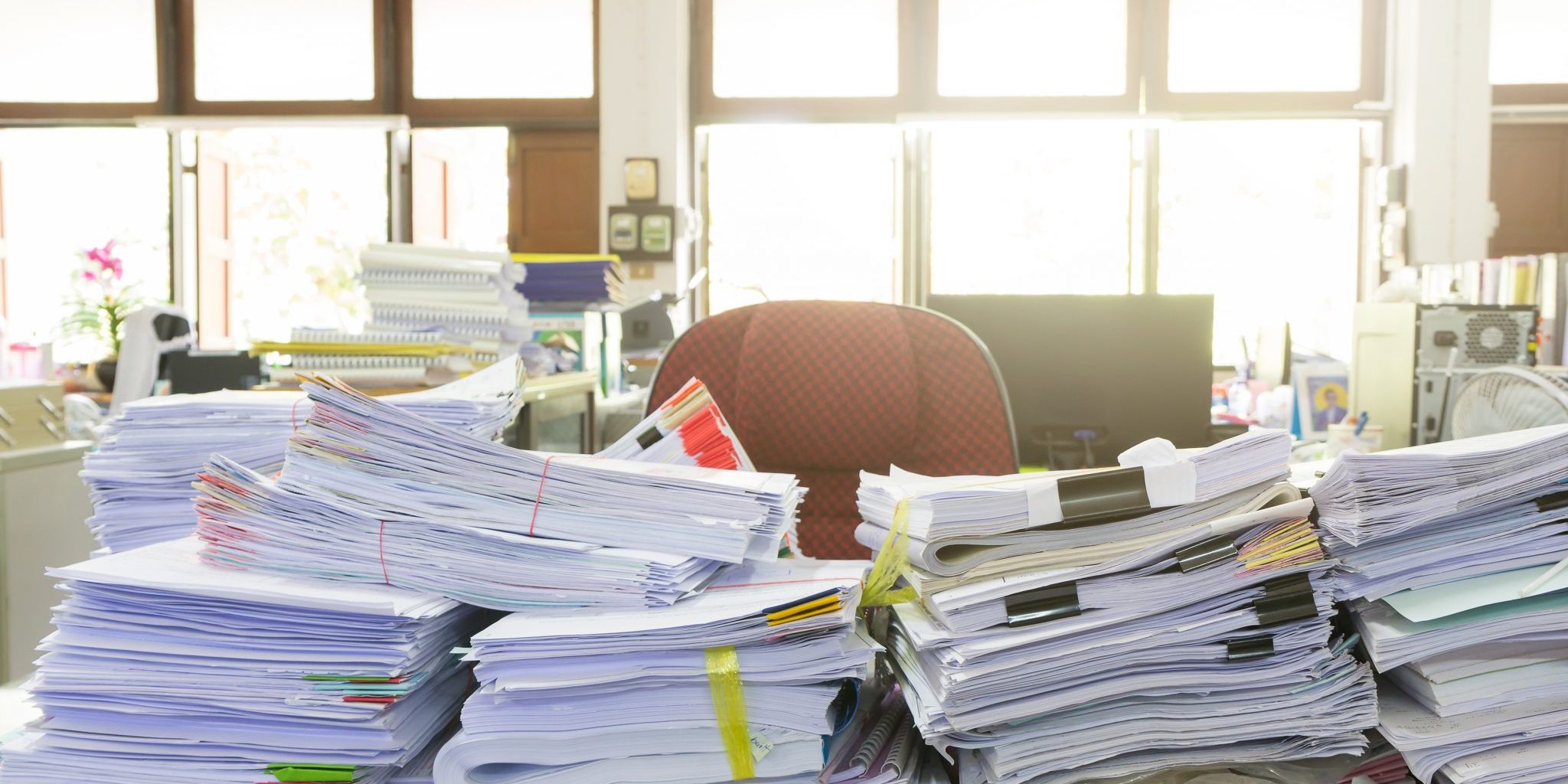Did you know that 30% of employees’ time is spent trying to find lost documents? That’s 72 days a year! Executives are no better – they spend 6 weeks a year looking for lost documents. ‘Messy desk syndrome’ and ‘random stack technology’ are alive and well, it seems. And represent an important obstacle to your success.
Messy desk syndrome
Despite the dream of the paperless office, most of us handle physical documents all the time. And most of them spend time on our desks. I see a lot of desks and it surprises me that so few of them are tidy. Most of them are great examples of what I call ‘random stack technology’, a symptom of ‘messy desk syndrome’. Some sufferers use ‘hi-rise’ stack technology – they attempt to impose order on the chaos that is their desk by sweeping everything into a single, tall pile that they add to repeatedly throughout the day. Others prefer a ‘duplex’ approach and divide their papers into two even piles. The ‘triplex’ desks have three piles, while the owners of ‘stadium’ desks arrange multiple piles of paper that radiate outwards on either side of the computer keyboard. I’m joking, of course. But my point is serious.
It’s become clear to me that the way we keep our desks relates directly to how effectively we use our limited time. And as one of the 4 foundations of business success, time management is closely linked with your productivity, profitability and growth. In other words, very much worth your attention and effort.
So, what are your desk habits? Do you see hi-rise, duplex, triplex or stadium technology? And what about your team?
What your desk says about your day
Think of your desk as a mirror of your planned tasks for the day. A messy desk reflects a disorganised, random approach, where interruptions will easily shift your priorities as you respond to whichever sheet of paper grabs your attention first. You find it hard to focus and concentrate on individual tasks. You’re easily distracted and not very effective. You rush and try to get through as much as possible. Rushing leads to mistakes and mistakes lead to frustration. You’re hoarding, holding on to every sheet of paper and every yellow sticky and assuming that every task is your personal responsibility. The papers on your desk are in no particular order, so when you’re looking for something in particular, you can rummage for minutes at a time. And that’s even more frustrating. You feel physically and mentally exhausted, and you look like a hamster in a wheel.
A tidy desk reflects an organised, systematic approach where you work through small and neat piles of paper that represent your priorities for the day. The piles are small because you know how to delegate. Like mine, yours is a Teflon desk where nothing sticks or stays for very long. The piles are neat because you don’t add to them throughout the day. Instead, you have a system for handling interruptions that allows you to stay focused, calm and effective as you work on your priority tasks. You take advantage of physical and online filing systems – they help keep your thoughts organised as well as your documents. Once a task is completed, the paperwork is filed. By the end of the day, you can reflect on definite progress towards your goals.
Challenge
Your desk is the way it is out of unconscious habit. They say it takes 7 weeks to establish a new habit.
We challenge you …







